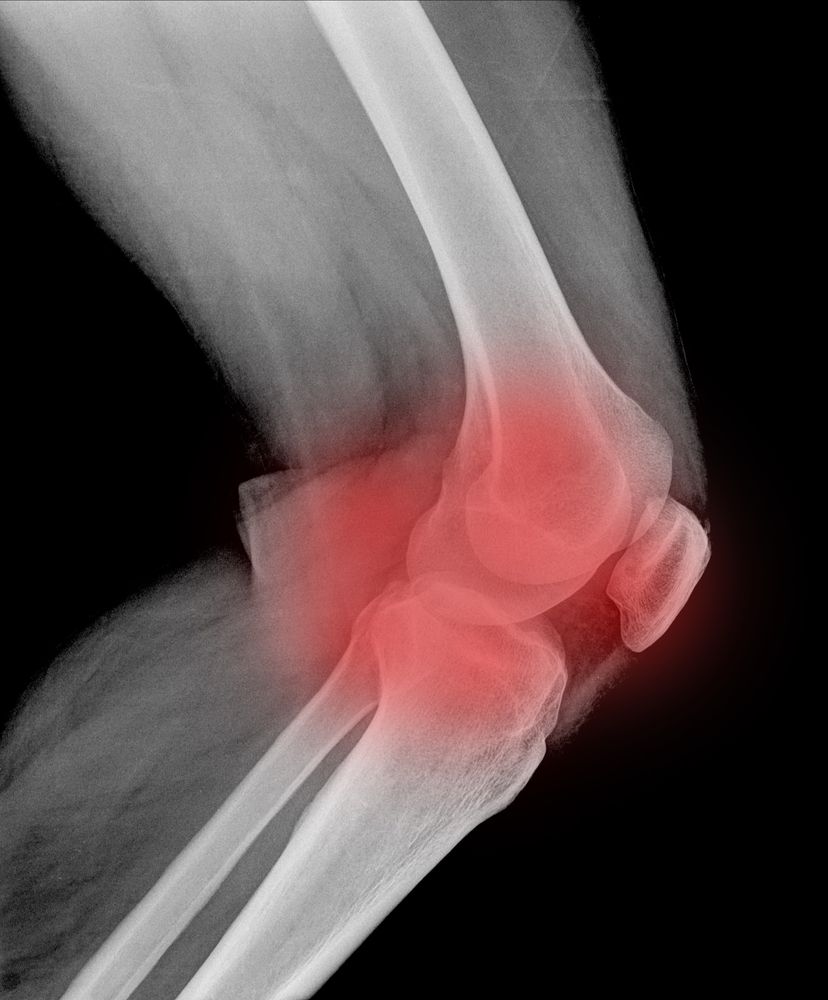Fish Oil in Osteoarthritis: Low-Dose Beats High
A new study finds that low doses of fish oil improved pain and function in knee osteoarthritis more effectively than high doses. No clinical or structural advantage to an anti-inflammatory dose was found.
©thailoei92/shutterstock.com

Contrary to expectations, fish oil taken in low doses was more effective than when given in high doses for improving pain and function in knee osteoarthritis (OA), a randomized study found.
At 2 years, the difference on the Western Ontario and McMaster Universities Arthritis Index (WOMAC) pain score favored low-dose fish oil over high-dose by 3.3 points (P=0.009) and by 3.1 points with adjustment for gender (P=0.014), according to Catherine L. Hill, MD, of the University of Adelaide in Australia, and colleagues.
And the difference on the WOMAC function score was 8.5 points (P=0.032), or 7.9 after adjustment for gender (P=0.046), again favoring the low-dose, the researchers reported online in Annals of the Rheumatic Diseases.
The use of supplements containing omega-3 fatty acids is widespread, with one Australian survey finding that one-third of adults reported consumption of these products within the previous month.
And the difference on the WOMAC function score was 8.5 points (P=0.032), or 7.9 after adjustment for gender (P=0.046), again favoring the low-dose, the researchers reported online in Annals of the Rheumatic Diseases.
The use of supplements containing omega-3 fatty acids is widespread, with one Australian survey finding that one-third of adults reported consumption of these products within the previous month.
However, the typical dose among users is 1 mL of fish oil per day, which consists of 0.3 g of eicosapentaenoic acid (EPA) and docosahexanoic acid (DHA), which is considerably below the anti-inflammatory dose of 10 mL, or at least 2.7 g of EPA/DHA.
Therefore, to see the possible effects of an anti-inflammatory dose of omega-3 fatty acids among patients with knee OA, Hill and colleagues enrolled 202 symptomatic patients in a double-blind trial.
"The study hypothesis was that high-dose fish oil would have superior efficacy to low-dose fish oil for symptomatic and structural outcomes in people with knee OA," they wrote.
The trial was preceded by a run-in phase, in which participants took 15 mL/day of sunola oil to identify and exclude individuals who couldn't tolerate the oil consumption.
Patients in the high-dose group were given 4.5 g EPA/DHA per day, while those in the low-dose group were given a blend of the fish oil containing 0.45 g EPA/DHA per day in combination with sunola oil. Both supplements were flavored with citrus oil.
At baseline and 2 years, participants underwent knee MRI to assess cartilage volume and bone marrow lesions.
Participants' mean age was 61, and mean body mass index was 29 kg/m2. Almost all had radiographic evidence of OA at baseline.
More patients in the high-dose group were women (59% versus 40%), but the two groups were otherwise well matched.
Drop-outs were more common in the high-dose group (35% vs 20%), with the most common reason being intolerance.
The use of nonsteroidal anti-inflammatory drugs and acetaminophen was permitted, but there were no differences in use between the two groups.
There were no differences at 2 years in MRI findings between the low-dose and high-dose groups. A decrease in cartilage volume was seen in 5% of the low-dose and 14% of the high-dose groups, while no change was seen in 84% and 71% and increases were seen in 11% and 15% (P=0.21).
For bone marrow lesions, the percentages having decreases, no change, and increases in the low and high-dose groups were 9% and 13%, 87% and 76%, and 4% and 11% (P=0.23).
Adverse events occurred frequently and at similar rates in the two groups. About 37% of patients in both groups experienced a hospitalization during the 2 years of the study, and two-thirds reported infections and gastrointestinal complaints. There were no bleeding complications, but there was one sudden cardiac death in the low-dose group that was considered to be unrelated to treatment.
Small amounts of weight gain occurred in both groups, but this was significantly greater in the high-dose group. "As weight gain is a potential mediator of effects on pain and function in knee OA, it is plausible that the increased weight gain observed in the high-dose group may have contributed to their poorer WOMAC scores," Hill and colleagues suggested.
Other possible explanations for the lack of benefit for high-dose fish oil were that sunola oil might have some unrecognized beneficial effects, although it is low in saturated and n-6 and n-3 fatty acids and also in anti-inflammatory polyphenols, or that both groups experienced placebo effects.
A limitation of the study was the lack of a placebo control group, although it was considered unethical to prohibit the use of fish oil in this population for a period as long as 2 years.
"The unanticipated finding of better pain and function in the low-dose fish oil/sunola group requires further investigation," the researchers concluded.
The study was supported by the National Health and Medical Research Council of Australia.
The authors reported no financial disclosures.
This article was first published on MedPage Today and reprinted with permission. Free registration is required.